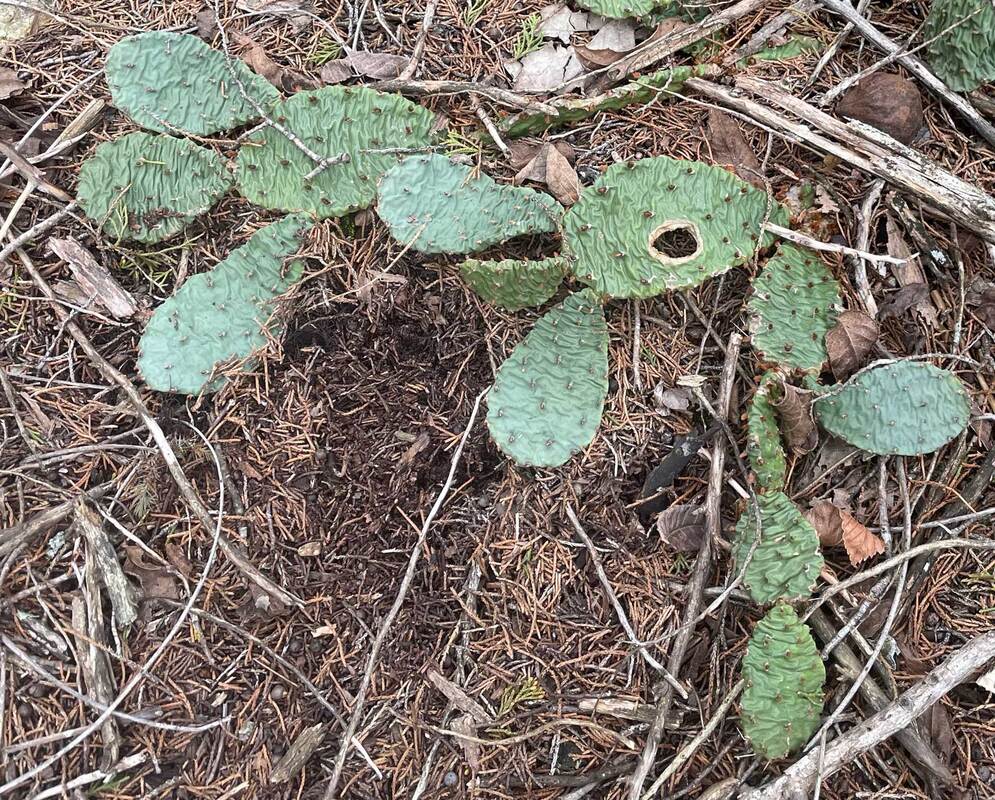|
Missouri isn't a desert state, so people don't usually think of cactuses growing here. (by the way, many people assume cacti is the correct plural for cactus instead of cactuses. But dictionaries recognize both versions as correct, leaving it up to the writer, and I prefer cactuses because it follows standard English grammatical rules, as opposed to the Latin cacti... so, don't blast me for using cactuses!). We do have a few cactus species here, but only one type is common enough that you might occasionally see it—the eastern prickly pear. I usually see them when I am hiking in the fall or winter because the other vegetation turns brown then, making the green prickly pear easier to spot. In the winter, the green paddle-like pads kind of dry up and become wrinkly, like this one that I found on a hillside near our house. Like many cactuses, prickly pears have sharp spines, which grow in clusters on the flat pads. The spines help the plant in two ways. They protect the cactus from being eaten by herbivores. Also, they help the plant reproduce and spread into new areas. The flat pads break off easily, and sometimes the spines make the pads stick to the feet or fur of animals. The pad breaks off, and the animal will carry it until it drops onto the ground in a new place. The pad will then take root and grow a new plant. This is a type of asexual reproduction, called vegetative cloning. Prickly pears also reproduce sexually, which is why they produce numerous large yellow flowers to attract bees and other pollinators. Photo Credit: - Prickly pear cactus - Stan C. Smith
0 Comments
Leave a Reply. |
Stan's Cogitations
Everyone needs a creative outlet. That's why I write. Archives
July 2024
|


 RSS Feed
RSS Feed